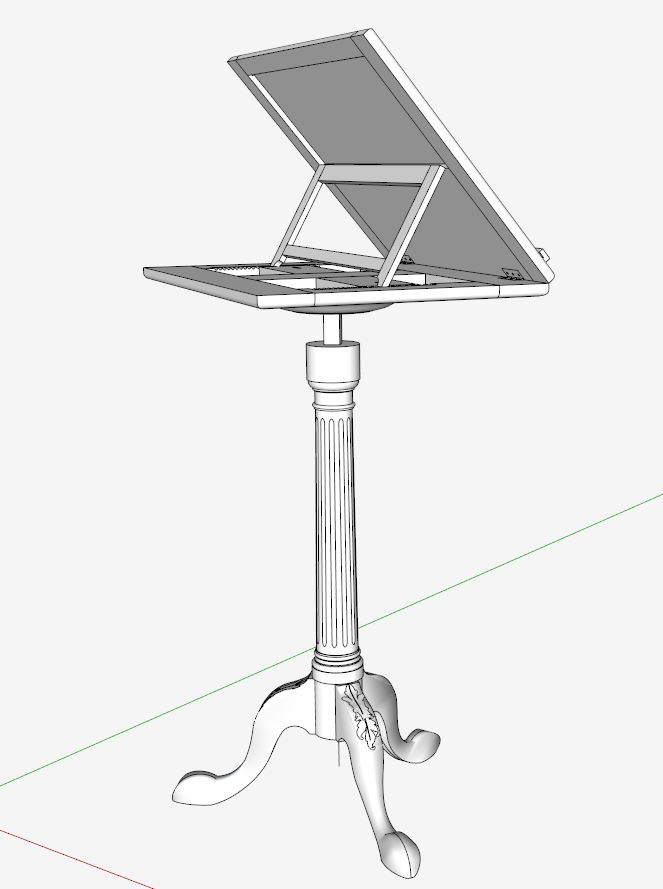
This is an 18th C. Music Stand that was made in Williamsburg, VA in about 1760. This was one of the furniture pieces being re-constructed and shown in this year’s Working Wood in the 18th C.
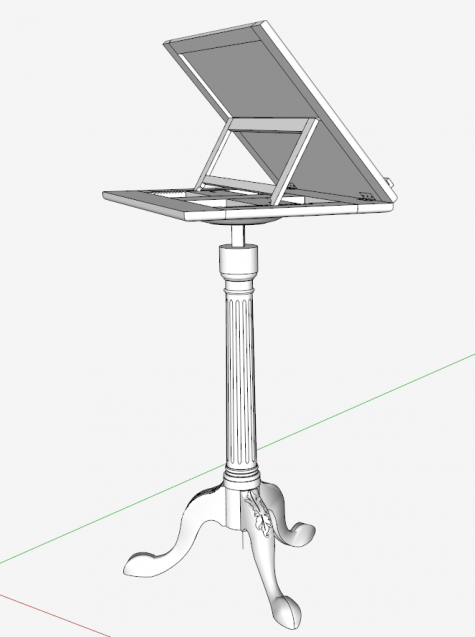
It’s a good example of the use of nested components – meaning there are assemblies of components made into higher level component assemblies. This allows movements of the music stand parts as they would occur on the actual piece. (You can see these movements in a video accessed below.)
For example, if you would like to raise the level of the music stand, you can select the component called Extension Assembly. I’ve copied this component below so you can see all of the parts that will allow height adjustment.
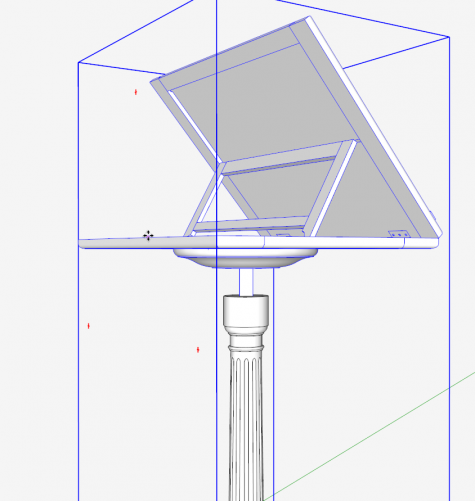

If I open this Extension Assembly, we will see additional component assemblies, for example this Hinged Top. Below I’ve pulled a copy of the Hinged Top Component Assembly. And that too includes another assembly, the Stand. You can also see that the hinge parts are also included in these assemblies.
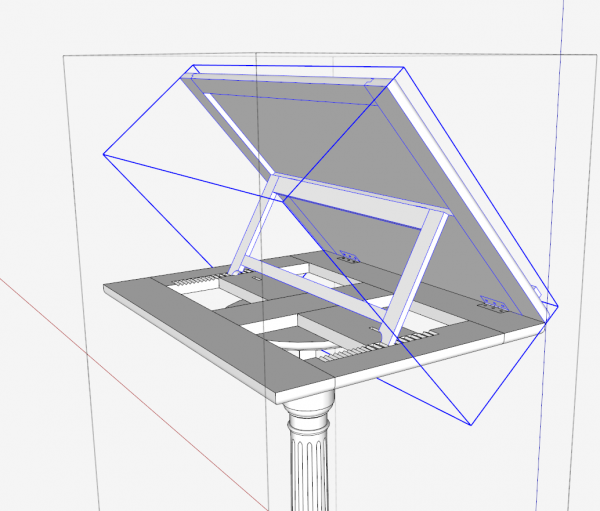
If I rotate the Stand, then I can check that it fits within the Top recess area.
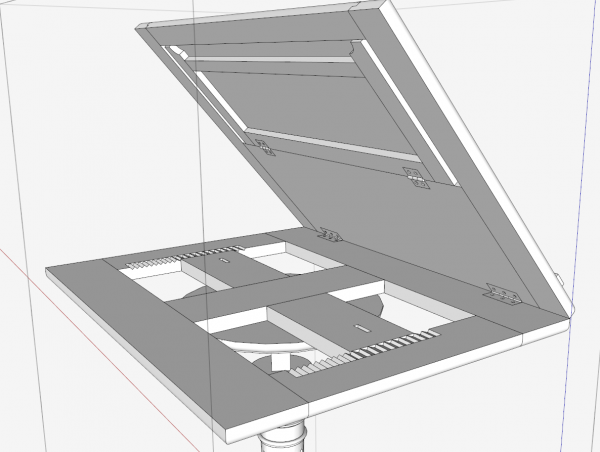
Another advantage of having these assembly components, is for there use in the construction drawings. Here is the Stand Assembly shown with dimensions.
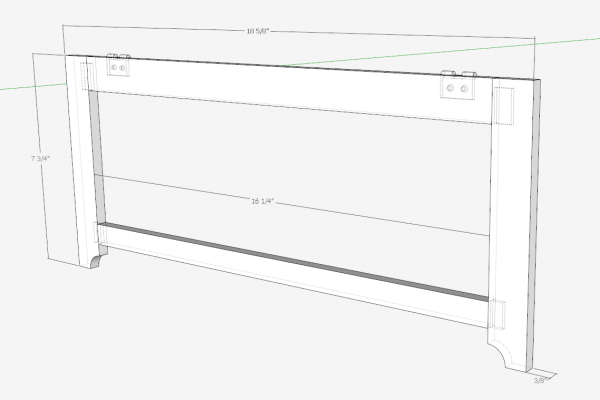
Here is the Music Stand with all parts rotated to the rest position.
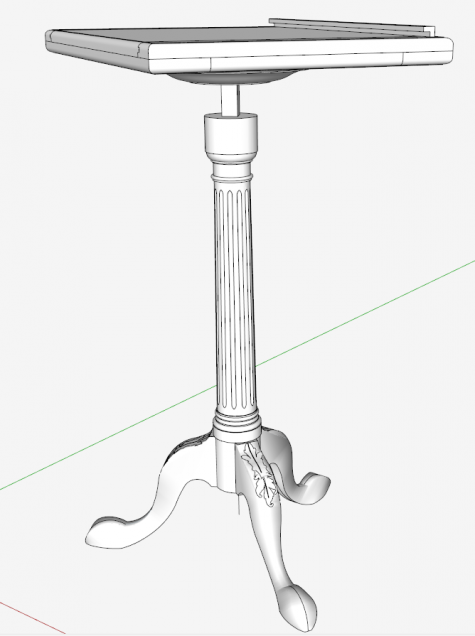
Also, these assemblies can be exploded to show the lower level parts in a drawing. Here is the Stand Assembly exploded into it stiles, rails, and half hinges.
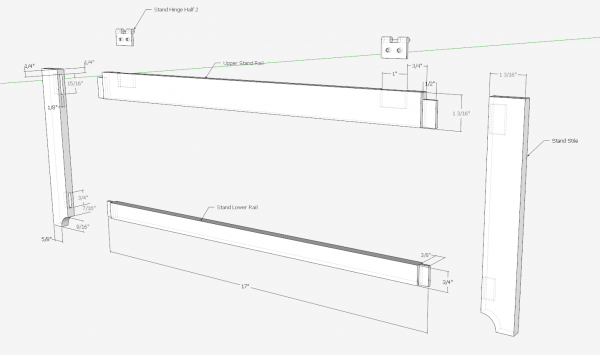
Tim Killen
@KillenWOOD
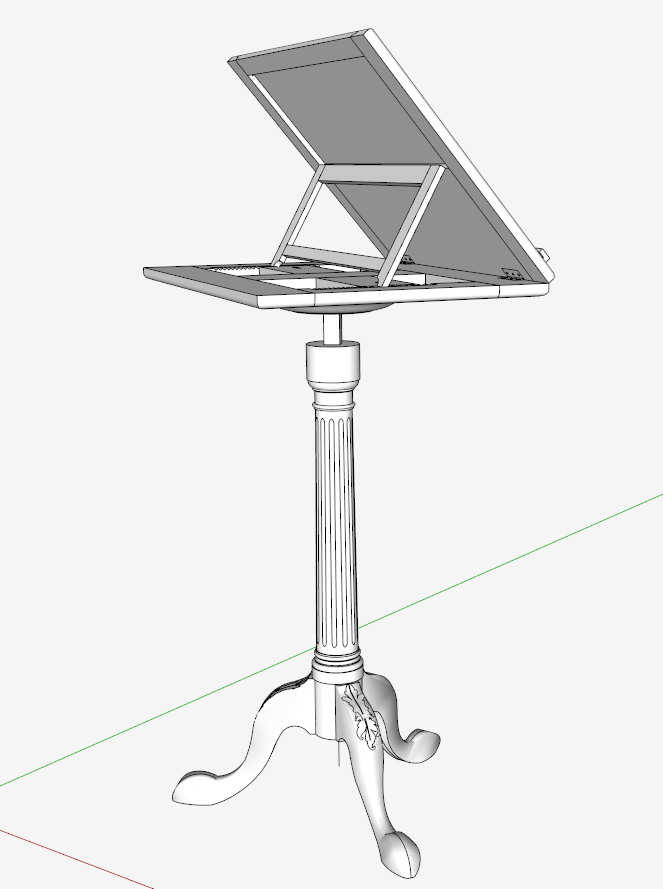

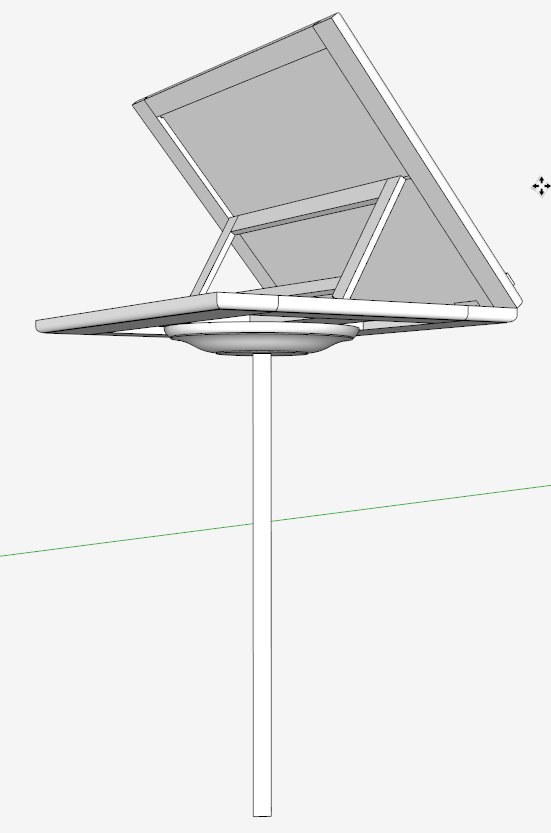
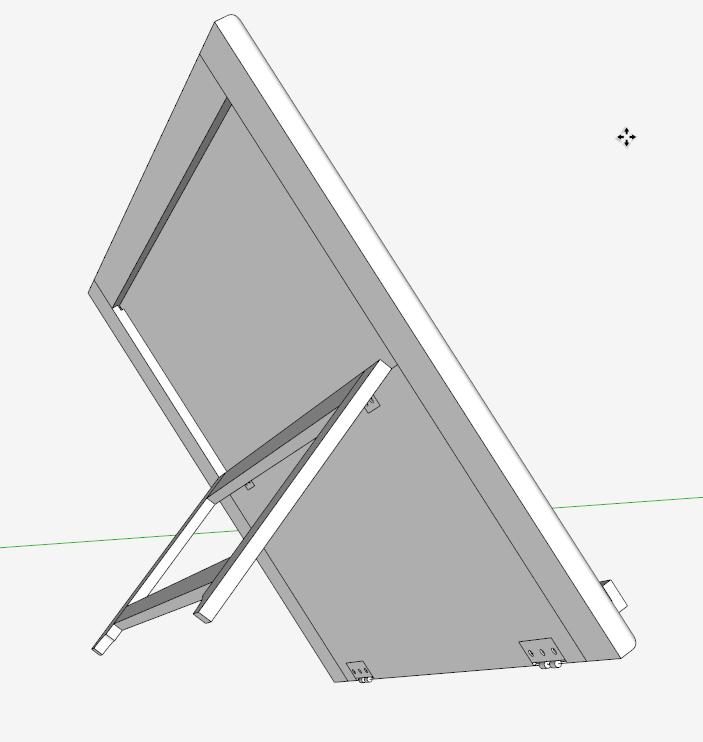
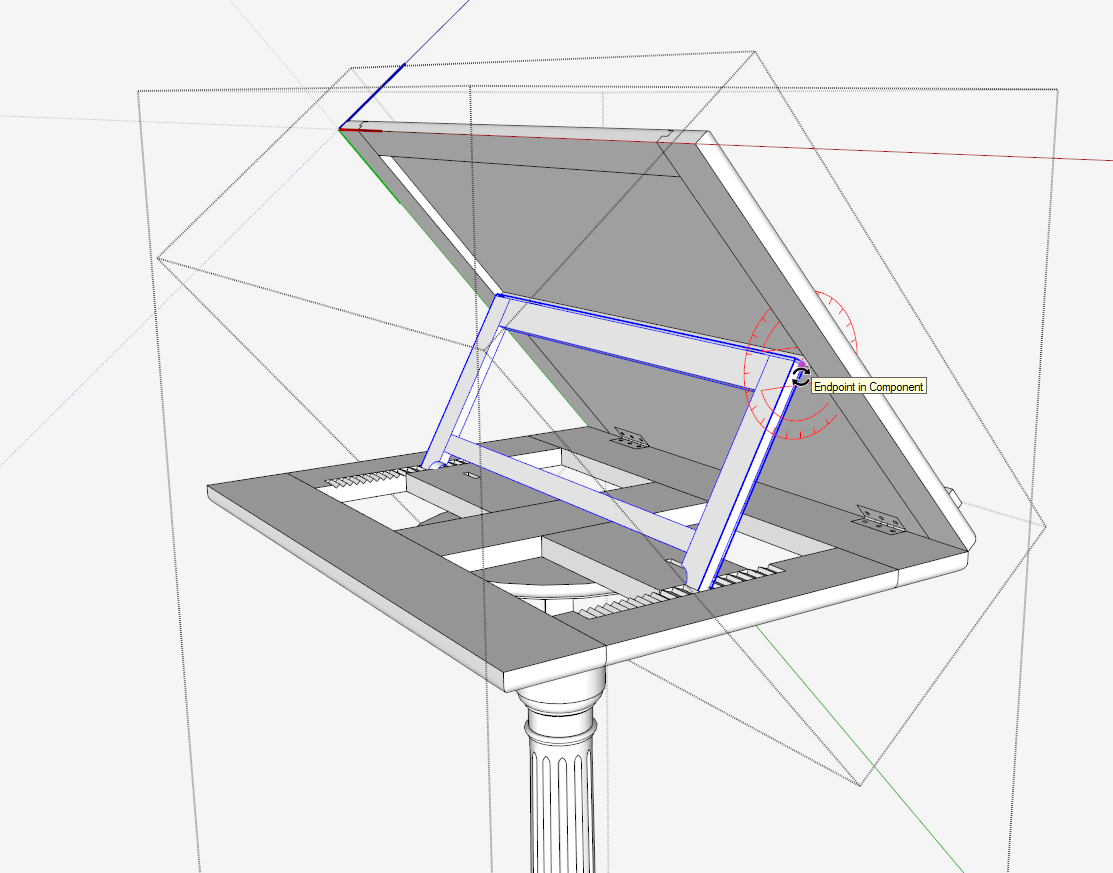
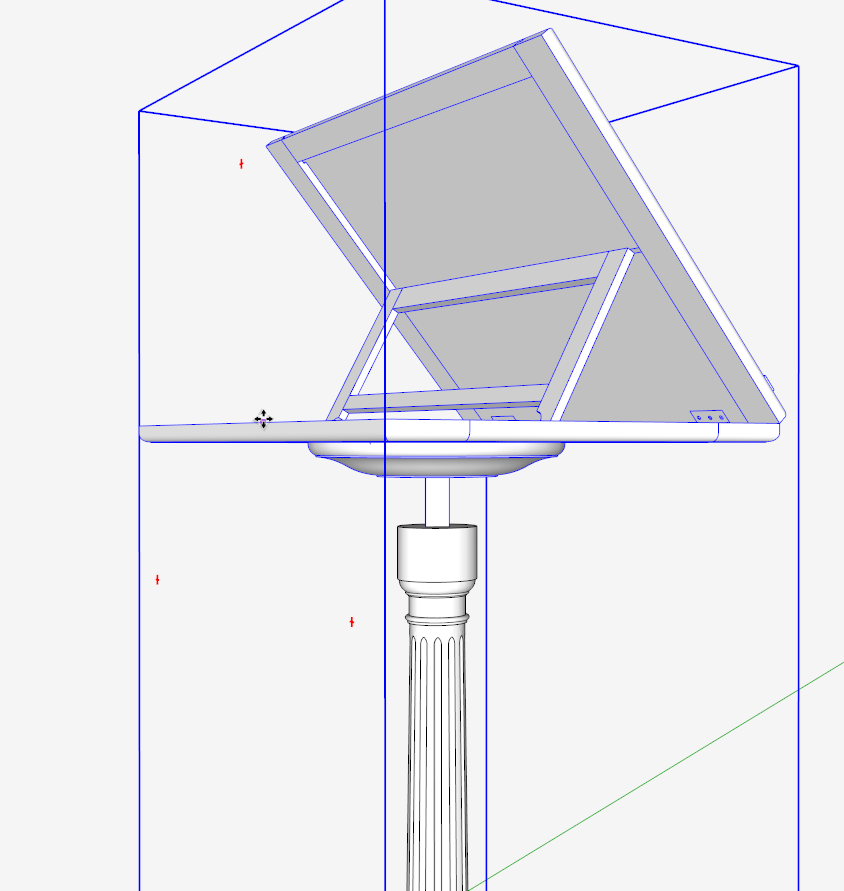
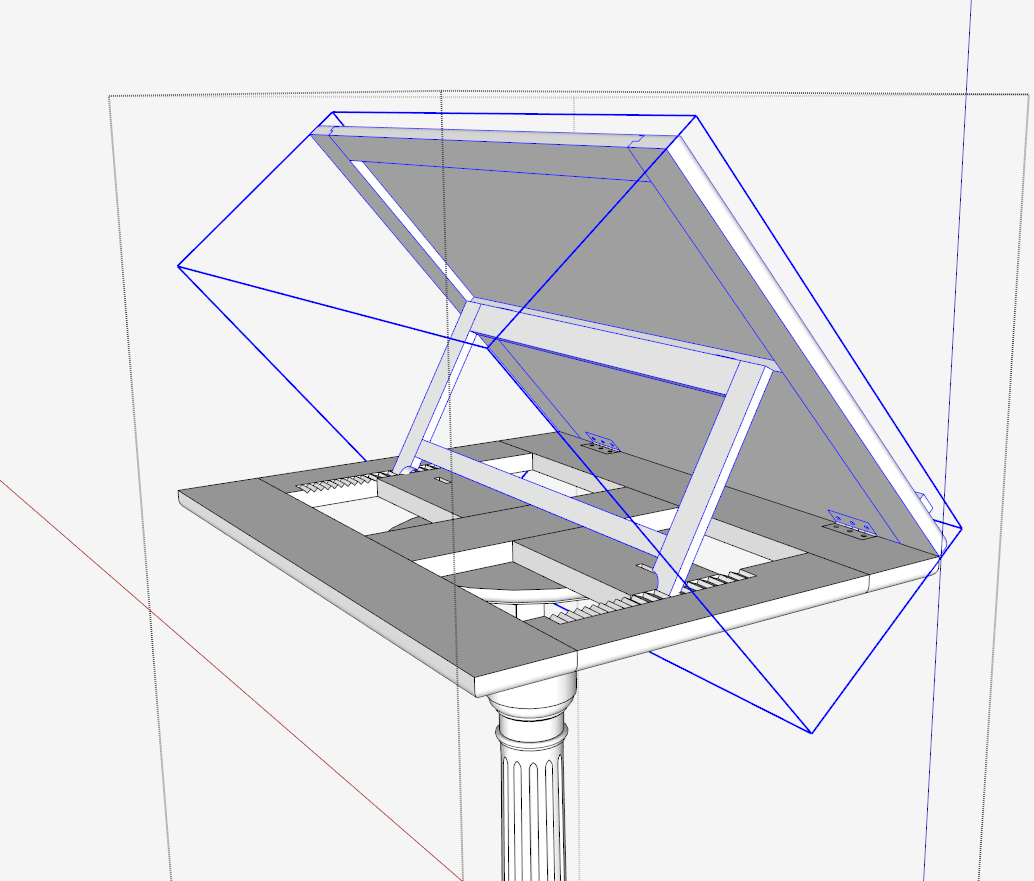
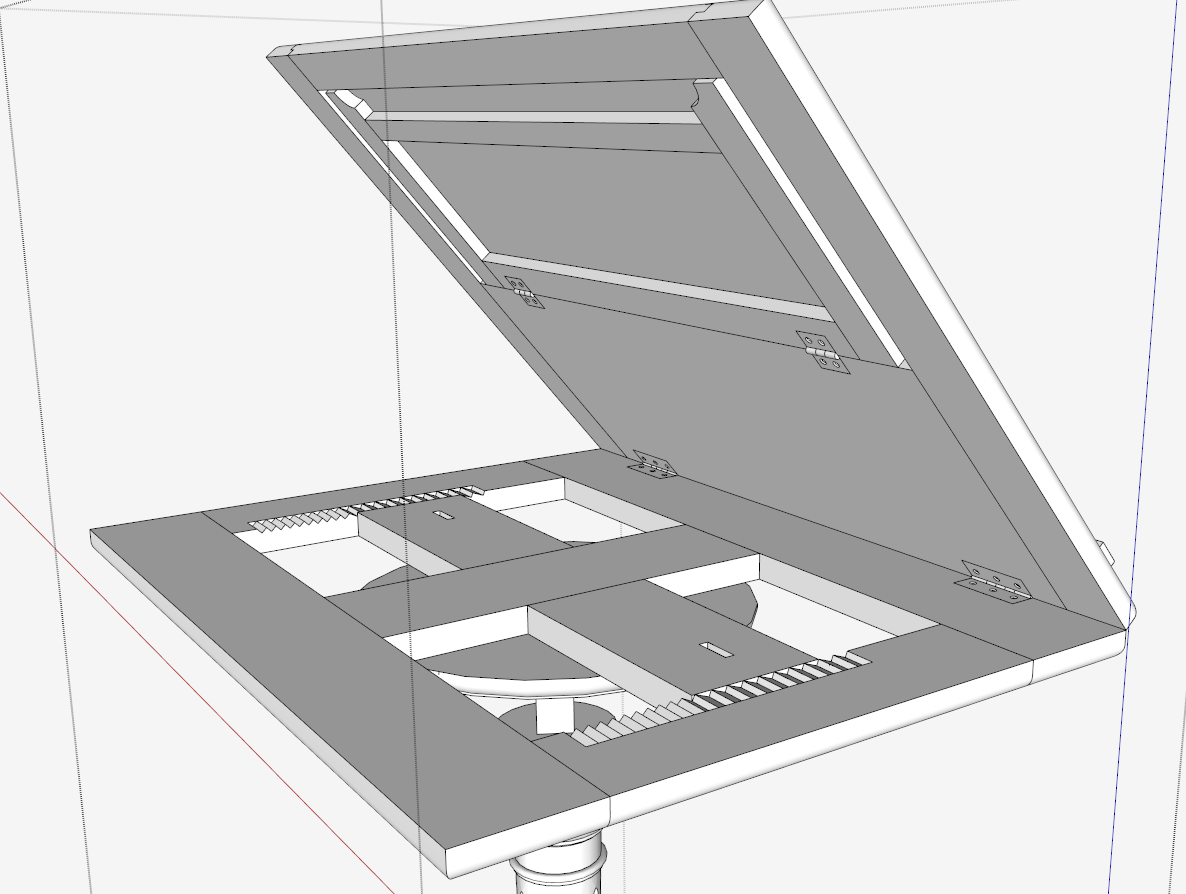
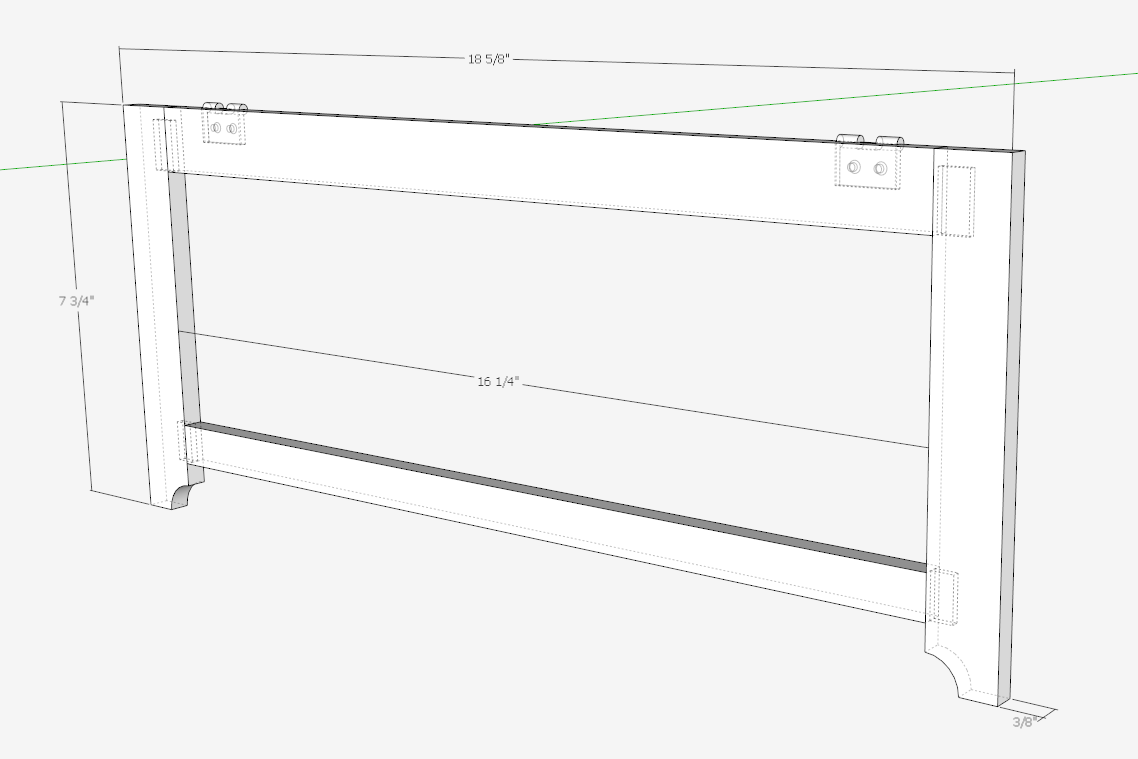









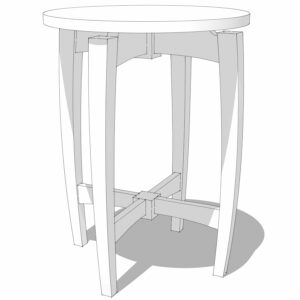
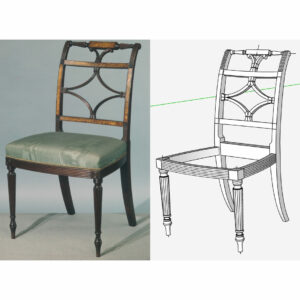
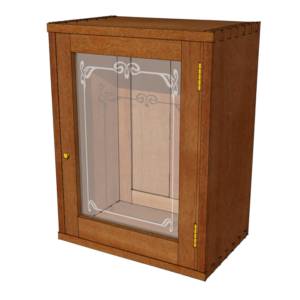












Log in or create an account to post a comment.
Sign up Log in